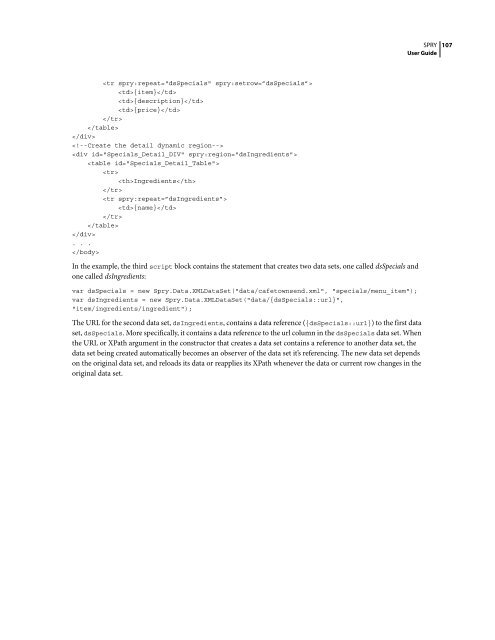Spry User Guide - Support - Adobe
Spry User Guide - Support - Adobe
Spry User Guide - Support - Adobe
Create successful ePaper yourself
Turn your PDF publications into a flip-book with our unique Google optimized e-Paper software.
{item}<br />
{description}<br />
{price}<br />
<br />
<br />
<br />
<br />
<br />
<br />
<br />
Ingredients<br />
<br />
<br />
{name}<br />
<br />
<br />
<br />
. . .<br />
<br />
In the example, the third script block contains the statement that creates two data sets, one called dsSpecials and<br />
one called dsIngredients:<br />
var dsSpecials = new <strong>Spry</strong>.Data.XMLDataSet("data/cafetownsend.xml", "specials/menu_item");<br />
var dsIngredients = new <strong>Spry</strong>.Data.XMLDataSet("data/{dsSpecials::url}",<br />
"item/ingredients/ingredient");<br />
The URL for the second data set, dsIngredients, contains a data reference ({dsSpecials::url})tothefirstdata<br />
set, dsSpecials. More specifically, it contains a data reference to the url column in the dsSpecials data set. When<br />
the URL or XPath argument in the constructor that creates a data set contains a reference to another data set, the<br />
data set being created automatically becomes an observer of the data set it’s referencing. The new data set depends<br />
on the original data set, and reloads its data or reapplies its XPath whenever the data or current row changes in the<br />
original data set.<br />
SPRY<br />
<strong>User</strong> <strong>Guide</strong><br />
107















